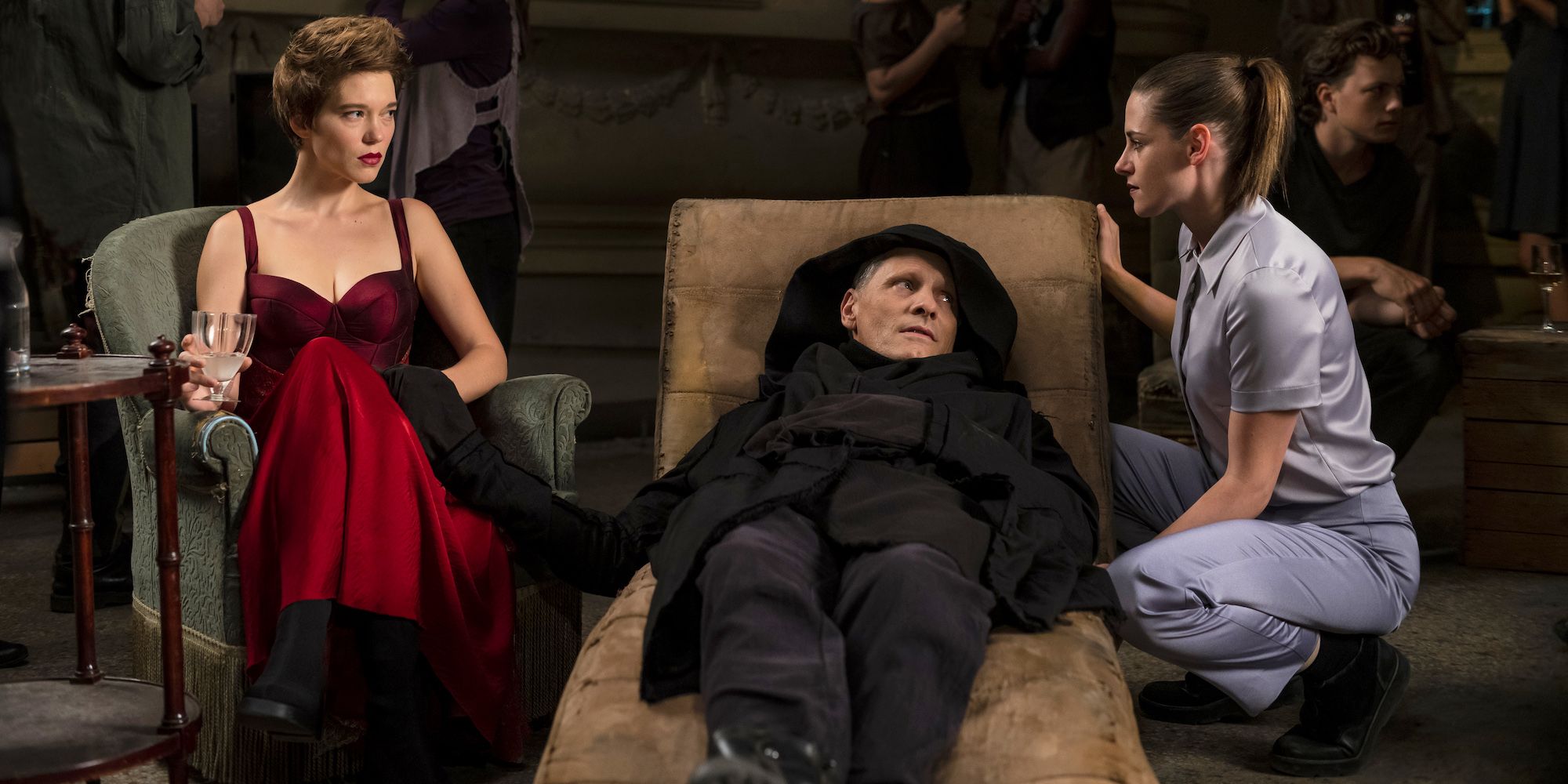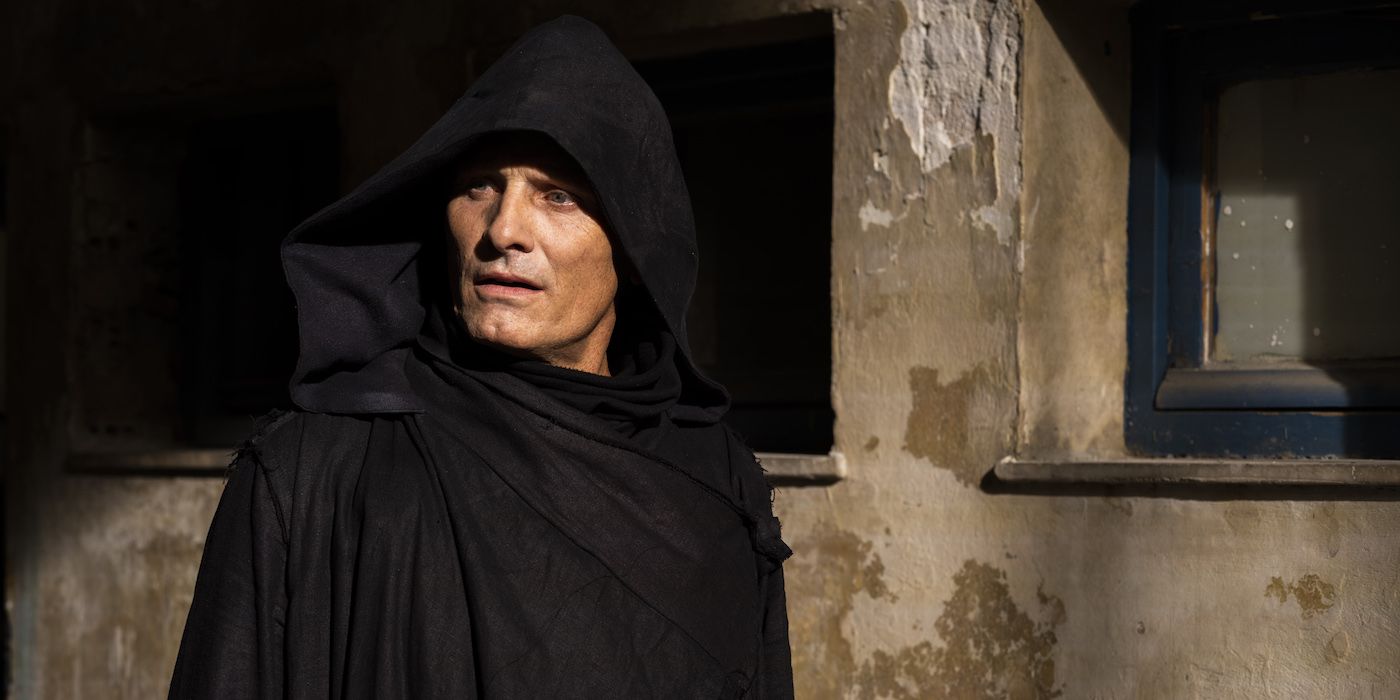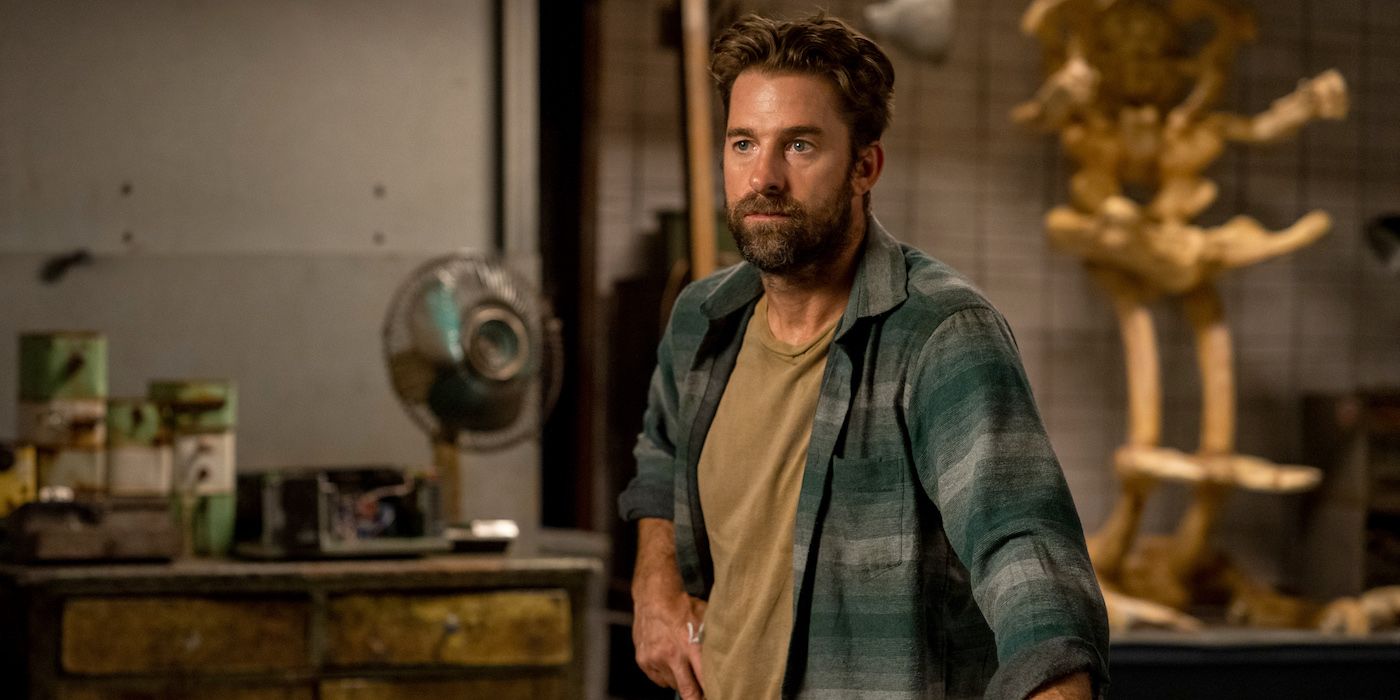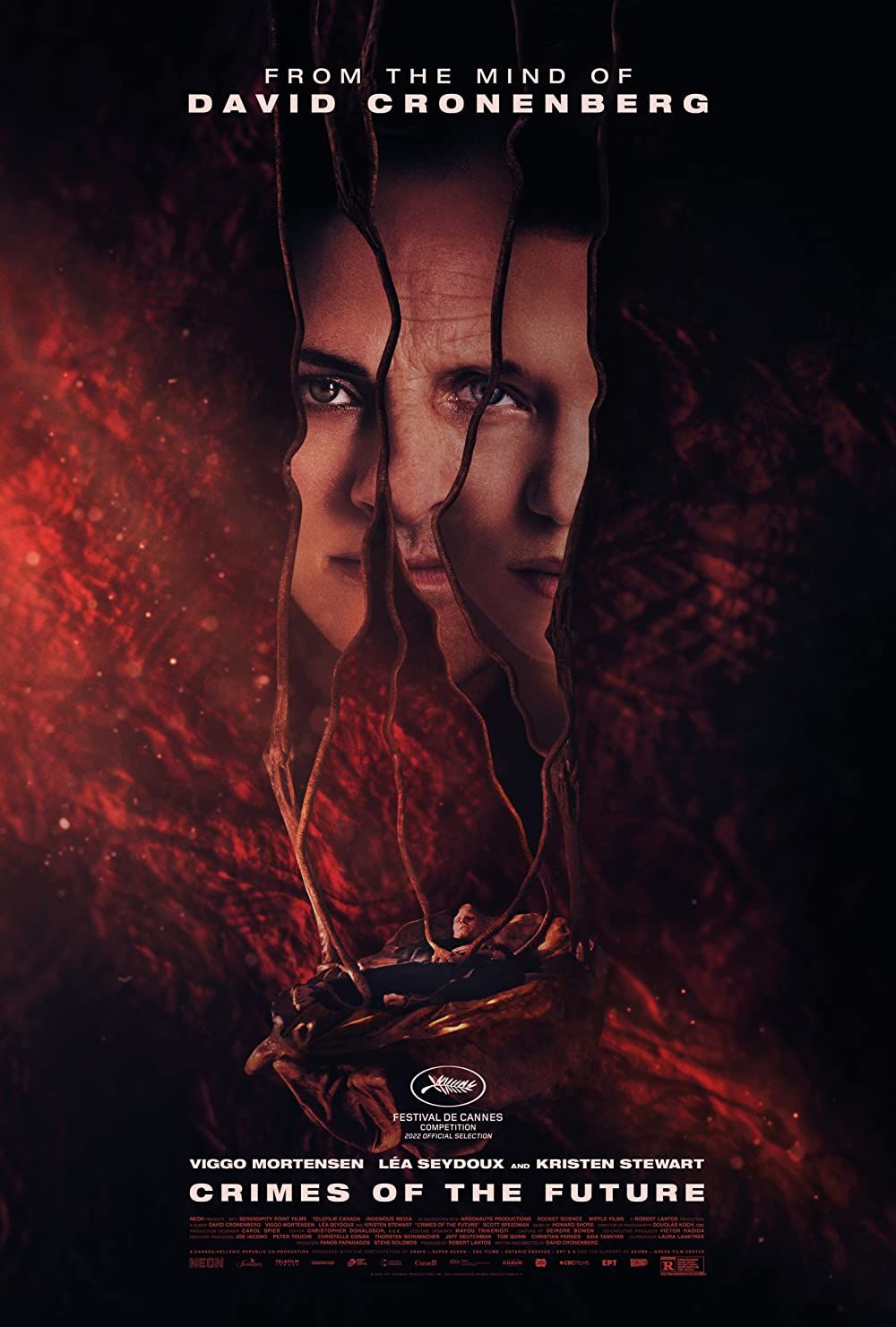Written and directed by David Cronenberg, Crimes of the Future marks his first time behind the camera in eight years. The film, which is graphic enough that it irked some audience members enough that they walked out of its premiere at the Cannes Film Festival, is teeming with body horror and intriguing concepts. But none of the concepts or character developments fully come together, leaving the film’s potential wasted while setting up interesting arcs that go nowhere.
Set at some point in the future, Crimes of the Future follows Saul Tenser (Viggo Mortensen), a performance artist who is experiencing Accelerated Evolution Syndrome, inexplicably growing new organs that are removed surgically by his partner and former trauma surgeon Caprice (Léa Seydoux) in public shows that are quite sensual. It’s a showcase of humans and machinery working side by side and it’s taken very seriously. Saul is one of a small population of humans who still experiences pain at all. This makes him a person of interest to many, including National Organ Registry investigator Timlin (Kristen Stewart), who is drawn to Saul after seeing one of the pair’s performances. The politics surrounding human evolution starts to emerge with the involvement of Detective Cope (Welket Bungué), and things take an interesting turn when the mysterious Lang Dotrice (Scott Speedman) approaches Caprice and Saul about performing an autopsy for their next show.
The premise is fascinating, especially as Cronenberg peels back the layers of a society that is torn when it comes to the development of humanity. Arguments for staunching the evolution of the body in a bid to maintain what makes the population “human” are front and center, while another group is wholeheartedly against holding the population back, wanting them to evolve to the next stage. Crimes of the Future dips into each of these sides, though it doesn’t come up with any resolution, nor does the director seem particularly interested in the answers and moral ambiguity Saul finds himself leaning into throughout. The film often feels like a series of thoughtful, disturbing, and strange events happening without a tether tying them to one another. The storylines end up drifting apart rather than coalescing into something greater. The film’s effectiveness also fails because of the sense of detachment — even the characters, despite fantastic performances from the cast, don’t feel as involved as they could be with what’s happening.
The film questions the human form and explores the ways in which people can experiment on each other and themselves now that there is no more pain involved. The questions that arise about art, humanity’s future, and technology’s role in evolving make for engrossing conversations. By the end of the film, however, they remain conversations that aren’t fully explored, half-formed concepts that barely scratch the surface within the world Cronenberg sets up. Even the body horror isn’t as creepy as the trailers and Cannes responses suggest. The disturbing performance involving Saul’s body being ripped open with surgical knives are almost torturous, but it’s too clinical and underwhelming to elicit much of a reaction. There is also a scene where Caprice and Saul take pleasure in being cut open, but it’s far too tame for such a futuristic setting where the rules and human bodies have changed so intrinsically. It’s as though Cronenberg is holding back, which doesn’t benefit the film’s premise at all.
Visually, the film has a creepy and unsettling aesthetic that goes along with its story. The streets Saul roams are practically barren, but the underground where he and Caprice perform is dark, sharp stones making up archways and platforms that separate the audience from the performers. It’s simultaneously eerie and open thanks to Douglas Koch’s precise, almost cold cinematography. The performances are passionate and uplift the material, but they can’t save the film’s general lack of direction.Crimes of the Future has an intriguing enough setup, but it doesn’t know how to tie everything together, leaving the disparate pieces of the plot adrift and turning the film into a tedious watch.
Crimes of the Future released in theaters on June 3. The film is 107 minutes long and is rated R for strong disturbing violent content and grisly images, graphic nudity and some language.




